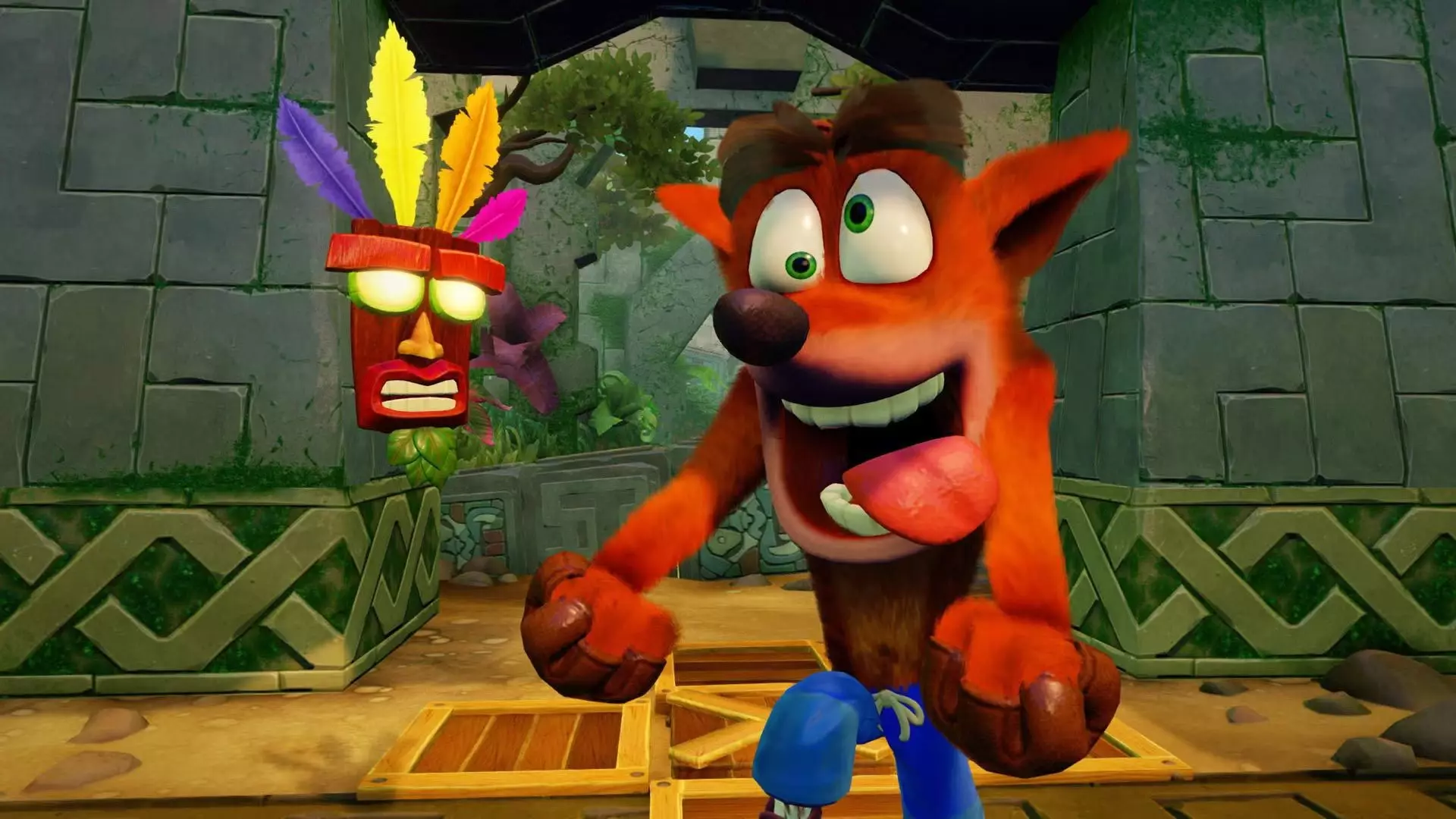Remaking beloved video games is often a high-stakes gamble. Developers aim to preserve the nostalgic magic while modernizing visuals and mechanics to appeal to contemporary audiences. When done right, a remake can introduce a timeless title to a new generation with improved graphics and refined gameplay. However, as Andrew Gavin’s critique of the Crash Bandicoot N.Sane Trilogy reveals, even the most impressive visual overhaul can conceal fundamental flaws that undermine the core experience. For enthusiasts and critics alike, this dichotomy serves as a reminder that fidelity to original gameplay mechanics is just as essential as visual fidelity.
Gavin’s detailed insights expose a sobering truth: excellence in remastering visuals does not automatically translate to an authentic gameplay experience. He praises the trilogy’s visuals for capturing the spirit of the original games, yet laments the significant compromise in the platforming mechanics—specifically, the jumping system. This nuanced critique highlights how the smallest technical details can have outsized effects on player immersion and satisfaction, especially in games where precise control is paramount.
The Critical Importance of Physics and Timing in Platformers
Crash Bandicoot, much like other platformers of its era, depended heavily on a controlled sense of timing and physics. Gavin’s explanation of the original jump mechanic—originally designed for the digital buttons of a PlayStation controller—emphasizes the genius of nuanced input recognition. The system, which measured how long the jump button was pressed to determine jump height, allowed for delicate adjustments that made platforming feel intuitive and responsive. This subtle feature is what separated a good platformer from a great one. It enabled players to perform small hops, precise landings, and nuanced maneuvers that contributed significantly to the game’s challenge and satisfaction.
The remake’s failure to emulate this mechanic isn’t a trivial omission; it’s a fundamental erasure of the game’s tactile core. Replacing the variable jump with a fixed-height mechanic results in a less responsive, more floaty experience. This not only diminishes the skill-based aspect of gameplay but also erodes the emotional connection players had with the original. Gavin’s critique underscores a common trap in modern remakes: prioritizing visual fidelity at the expense of gameplay authenticity.
The Real Cost of Visual Overhaul Without Control Fidelity
The temptation to focus heavily on graphics can lead developers astray, leaving vital gameplay elements in the dust. In the pursuit of shiny new visuals, the subtle yet critical mechanics that defined a game’s success are often overlooked or simplified. Gavin’s commentary illustrates how this oversight can turn what should be a seamless, exhilarating experience into something awkward and frustrating. The “huge and floaty” jumps in the remake exemplify this tragic disconnect, illustrating how a game’s feel can be compromised even on modern hardware capable of rendering stunning visuals.
In a broader context, this issue speaks to a fundamental challenge in game development: striking the right balance between aesthetic upgrade and mechanical integrity. A graphically polished but mechanically inferior remake risks alienating both fans of the original and new players. This demonstrates that fidelity is a multi-layered concept—visual, mechanical, and experiential—and neglecting any one of these facets can impede the overall success of a project.
Does Visual Fidelity Justify Mechanical Compromise?
Gavin’s critique—though rooted in technical specifics—encourages a more philosophical discussion about what makes a game great. Is a visually stunning remake worth the loss of the game’s tactile soul? To some, the answer might be yes, especially if the visuals attract gamers who might not otherwise give the original a chance. But for those who value gameplay precision and control dynamics, the change reflects a betrayal of the original’s essence.
It’s tempting for developers to lean into the spectacle, but as Gavin’s words suggest, achieving a faithful recreation of gameplay mechanics is equally critical. A polished appearance cannot compensate for a fundamental shift in control feeling, particularly in a platformer where timing is everything. If the core mechanics feel off, the entire experience suffers, regardless of the beauty on screen.
Gavin’s honesty serves as a cautionary tale for future remakes: do not underestimate the power of subtle mechanics that players may overlook superficially but feel instinctively. A great remake respects both the eye and the hand—the visual aesthetics and the tactile feedback that make gameplay satisfying.
In the end, Gavin’s critique is a reminder that remaking a classic game is not merely about upgrading textures or models; it’s about preserving the intimate relationship players have with the game’s mechanics. Without that, even the most visually impressive remakes risk becoming hollow echoes of their former selves.

